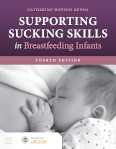If you purchase through these links,
I get a small commission. Thank you!

September 26, 2012:
The Dark Side of Block Feeding
Block feeding is an effective method of reducing milk production in mothers with hyperlactation. If the intervals of time between alternating breasts (blocks) are increased gradually and mothers are instructed to express minimal amounts of milk by hand to maintain comfort, the risk of engorgement and milk stasis, plugged ducts and mastitis are low. Block feeding is problematic when applied to mothers who do not have hyperlactation. Many mothers know about block feeding, and resort to unilateral feeds when their infants are fussy or have difficulty handling milk flow. Sometimes breastfeeding helpers recommend block feeding in a telephone contact when mothers report infant fussiness, without a good feeding assessment and weight history. Block feeding should only be recommended when the infant is consistently gaining more than 8 oz (225 g) per week and has no risk factors for inefficient feeding if the milk production is reduced. Tongue-tied infants may have difficulty handling a normal milk flow, then fail to thrive if mother deliberately reduces milk production. Before advising block feeding, infants should be assessed for dysphagia, tongue-tie, micrognathia, respiratory tract instability (laryngomalacia/tracheomalacia). Test weights are also helpful in determining whether mother�s milk flow is excessive due to increased milk production or whether the infant is having difficulty with a normal flow.
Feedback

Share your own nuances. Email your submissions to: vincent.genna@gmail.com. Please include "comment" and the title of the post in your subject line, and your name and credentials if you would like them posted.

